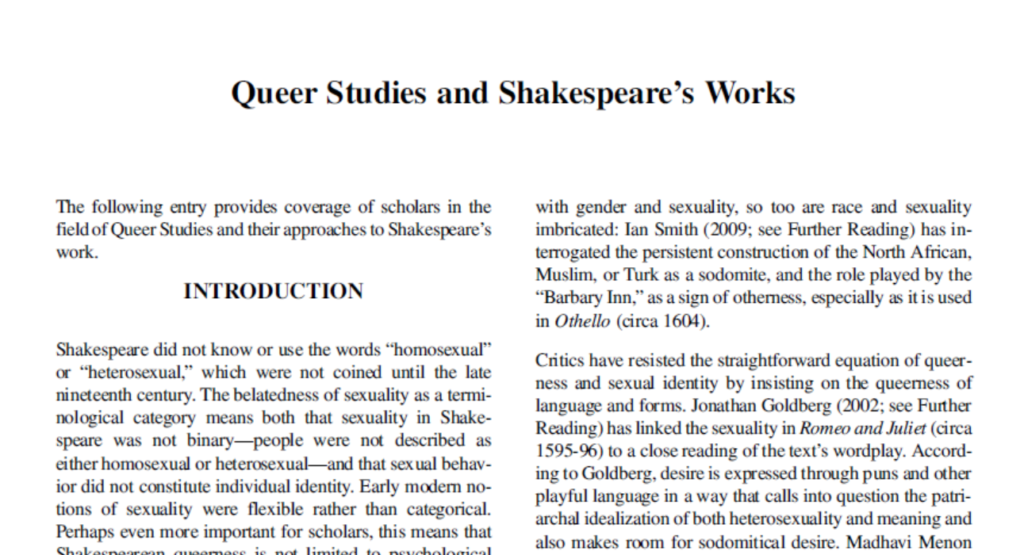| By Rebecca Parks, Senior Content Developer, Gale, a Cengage Company |
The highlight of my 2018 vacation to London was attending a performance of The Taming of the Shrew at the Globe Theater. For those of you who have never been there, the current Globe is a reproduction of the original Globe Theater built in 1599 by and for Shakespeare’s theater company. The design is really striking: the octagonal theater includes a large “standing-room-only” space in front of the stage, ringed by three levels of covered seating; the theater is open to the sky, which enhances the beauty of the theater as day passes into night. Of course, the open-air design also makes the experience a bit more risky than the average play outing as theater-goers are exposed to whatever the weather may bring in England’s notoriously dank climate.
But the risk inherent in attending the Globe in modern times is nothing compared to the risk back in Shakespeare’s time. The use of wood as the predominant building material, combined with the necessity of fire for lighting, made building fires a constant threat. In the ultimate “oopsie,” a shot from a cannon for a production of Henry VIII lit a blaze that burned down the Globe on June 29, 1613.
The theater didn’t stay burned down for long; the troupe rebuilt it the following year. The Globe couldn’t bounce back, however, from a more formidable foe nearly thirty years later: Puritans successfully campaigned to shut down all theaters in the city in 1642, citing their corruption of the public’s morals. They associated theater with other sinful entertainments, such as brothels and taverns, in promoting laziness and lust (and it didn’t help that theaters sometimes put on productions that specifically mocked Puritans). Conservatives at the time viewed theater productions—including Shakespeare’s now-canonized plays—as transgressive, meaning they violated the norms of society.

Fast forward to the twenty-first century and modern scholars are once again looking at how Shakespeare’s works are transgressive—this time upending social norms related to gender, the body, and sexuality by examining his plays through the lens of queer studies. The average Shakespeare aficionado may be surprised by this approach, given that terminology such as “heterosexual” and “homosexual” did not exist in Shakespeare’s day. Sure, Shakespeare’s plays are replete with gender-bending, including liberal amounts of cross-dressing, and Renaissance theater itself mandated that men and boys play all female roles. But how can we connect these classic works to modern ideas?
This very topic is the focus of an upcoming volume of Shakespearean Criticism, published by Gale, a Cengage Company. Volume 200, which will be available in July 2021, groups several works of literary criticism under the umbrella title “Queer Studies and Shakespeare’s Works.” An overview essay answers the question above by stating “the project of queering Shakespeare allows critics to think beyond issues related to the body and address broader concerns in such areas as language, politics, and identity.”
For example, a 1987 essay by Phyllis Rackin explores how the notion of gender becomes doubly confusing when male actors play female characters who then cross-dress as men, as can be seen in the heroines of Merchant of Venice, As You Like It, and Twelfth Night. A 2004 essay by Tamara Powell and Sim Shattuck examines cross-dressed heroines in those plays, as well as the plays Two Gentlemen of Verona and Cymbeline, to explain how Shakespeare establishes a pattern of giving his cross-dressed females traditional male freedoms. Grace Tiffany argued in a 1995 essay that Shakespeare’s use of the androgyne (someone who combines masculine and feminine characteristics) destabilizes the conception of gender identities. Ana Penjak looked specifically at the character of Lady Macbeth from Macbeth in a 2016 essay, referring to the “trans-gendering” of Lady Macbeth in the way her telling of three stories in the play reflect a changed gender or male-female binary.
- James Wermers (2010) examined how productions of Much Ado About Nothing, The Merchant of Venice, and Macbeth relied on implicit queer-vs.-hetero logic to expand on themes already present in the plays, such as the non-reproductive nature of queer desire.
- Sujata Iyengar (2001) examined the signs of gender and gender differences in the 1998 movie Shakespeare in Love.
- Jonathan Crewe (1995) argued that Twelfth Night can be used as a point of reference for the “transvestite politics” in the 1993 film The Crying Game.
These and other essays in the volume illuminate a groundbreaking approach to the study of the Bard’s works that continues to develop as queer studies grows as an academic field.
Shakespearean Criticism, Volume 200, will be available July 2021 in print and eBook format on Gale eBooks.


